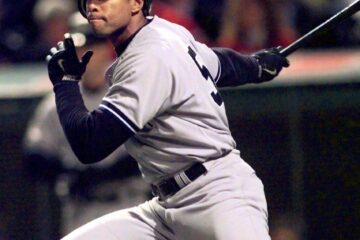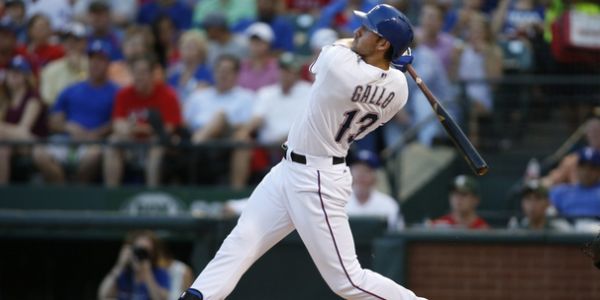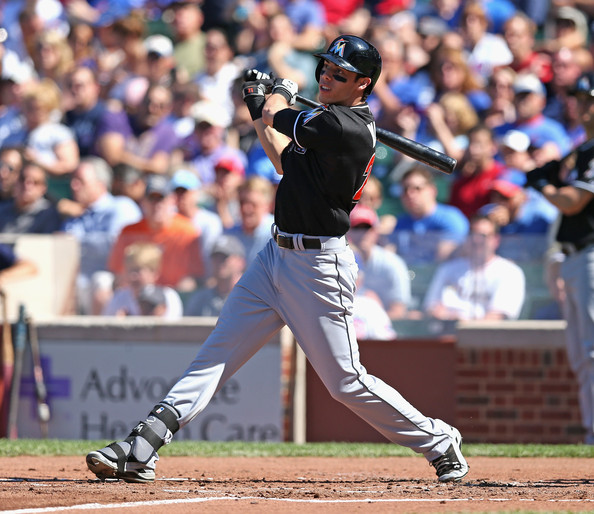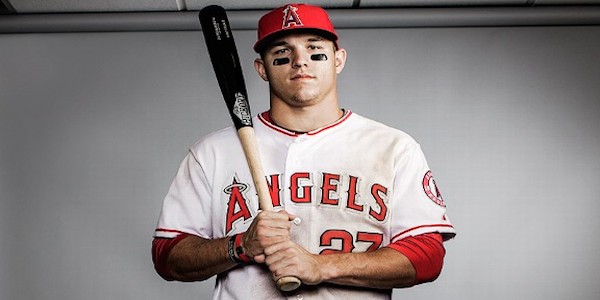2014 Fantasy Baseball: Total Run Index Sneak Peeks, Centerfielders
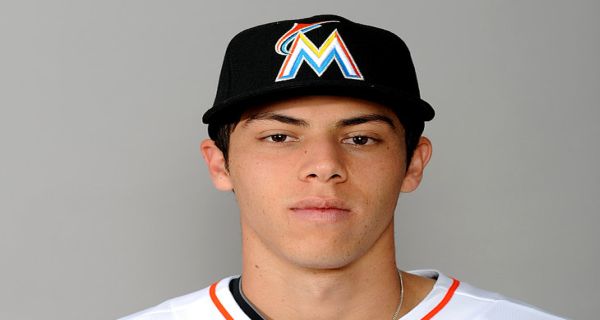
We’ve gotten ourselves pretty deep into these sneak peeks and some people are probably coming in fresh. As they say in the radio business, you have to reset your conversation every fifteen to twenty minutes because the audience often changes. It’s hard to say how often we should do this in blog land, but now seems like a good time.
The purpose of the TRI sneak peeks is to give everyone a glimpse into how TRI works before is is unveiled for real later in the offseason. So, you are looking at how 2013 looked according to TRI and not necessarily how anyone should plan out their drafts for next season. That will come later and we will have 20 players per position instead of the ten you see here. Additionally, the numbers will look different because they will be a composite of several seasons instead of just 2013.
TRI combines elements from several statistical platforms to come up with one number for hitting and one number for baserunning. What you see are the number of runs above (or below) average a player is at that particular skill. Using such a number allows us to compare players from different positions because we are comparing players with the big league average. So, you can use it to prioritize particular players on draft day. That being said, let’s take a look at how centerfield turned out.
1. Mike Trout— Los Angeles Angels
Hitting: +67.4
Running: +5.6
TRI: +73.0
The MVP voters did it again. They ignored a vastly superior player in Trout because he did not play on a playoff team. It isn’t his fault that both Josh Hamilton and Albert Pujols came up lame. Just imagine if Hamilton and Pujols could turn back the clock a few seasons just once. This is the best player in baseball hands down and if he isn’t the number one overall pick in your draft then that guy is nuts.
2. Andrew McCutchen— Pittsburgh Pirates
[am4show have=’p3;p4;p7;p9;’ guest_error=’Front Office’ user_error=’Front Office’ ]
Hitting: +43.3
Running: +3.0
TRI: +46.3
To give you an idea of Trout’s dominance, McCutchen is second at the position and the reigning National League MVP. He trails Trout by nearly 30 runs (or three wins) on the offensive side of things. If McCutchen lasts until the second round of any fantasy draft it will be a shock. He has produced a few 40+ run seasons in a row now.
3. Shin-Shoo Choo— Cincinnati Reds
Hitting: +40.0
Running: -0.3
TRI: +39.7
What a time to be a free agent. There are some bigger names on the market (Robinson Cano), but few guys in the business make the impact he does on offense. Whoever adds him (likely during the Winter Meetings) will add the best leadoff guy currently in the business. He can also hit in the three hole depending on a team’s needs. He’s valuable whether he is setting the table or cleaning it off.
4. Carlos Gomez— Milwaukee Brewers
Hitting: +19.1
Running: +2.9
TRI: +22.0
This is one of the values of a metric like TRI. It’s nice to see a ranking of guys (statisticians call it “ordinal data”) but when you are comparing multiple players from multiple positions you want more. Notice the separation between Gomez and Choo. That means that if you don’t get in on the top three guys you might want to wait for awhile. Gomez will give you power and speed, but whether he will hit enough to get on base or have an acceptable average remain to be seen.
5. Adam Jones— Baltimore Orioles
Hitting: +16.3
Running: +3.3
TRI: +19.6
I’m sure Jones will actually go higher than Gomez in most leagues. In a traditional 5×5 league that might actually make some sense. The only hole in Jones’ game offensively is a lack of patience at the plate. That only hurts you indirectly in those traditional leagues. If your league has added an element of walks (through walks or OBP as a category) you’d probably be better off taking Gomez.
6. Coco Crisp— Oakland Athletics
Hitting: +13.8
Running: +3.7
TRI: +17.5
It was the darnedest thing really. 2013 was clicking along like normal and then Crisp turned into a power hitter. He had ten home runs going into August (which was higher than normal but not outrageous) and then added a cool 12 home runs from August 1st on. I feel fairly confident in saying that Crisp won’t be a 20/20 guy again, but he should be good for another ten home runs and maybe as many as 30 steals.
7. Jacoby Ellsbury— Boston Red Sox
Hitting: +9.2
Running: +8.3
TRI: +17.5
The baseball world waits to see which team will bite and pay Ellsbury based on the mirage that was his 2011 campaign. He was finally healthy last season and certainly worth more than the numbers here indicate. After all, he played on a pennant winning team where he could steal bases and score runs by the bunches. Where he ends up will dictate whether he has more value than this moving into the future.
8. Colby Rasmus— Toronto Blue Jays
Hitting: +15.5
Running: +1.1
TRI: +16.6
The fanboys pegged Alex Anthopolous as their general manager of choice a few years ago and one of the main reasons is that he was able to procure Rasmus from the Cardinals for some middle relievers. Rasmus has never impressed me much, so I was not one of those fanboys. Rasmus finally began to justify the faith last season, but he still is very prone to slumps. That being said, he will reward your faith with 20/20 production at minimum and close to 30/30 if the progress continues.
9. Desmond Jennings— Tampa Bay Rays
Hitting: +10.9
Running: +4.0
TRI: +14.9
Jennings is similar to a lot of guys fantasy wise. He has so much ability that fantasy players want to pick him higher. Athletically, he seems like a decent bet to bust out, but this will be the fourth season for him to get significant plate appearances. If he doesn’t do it this year it isn’t likely to happen. I’d let someone else take a chance on him. He’ll reward you with good stolen base numbers and some occasional power, but star potential might never materialize.
10. Christian Yelich— Miami Marlins
Hitting: +7.0
Running: +3.3
TRI: +10.3
This is where it is really dangerous to play fantasy sports. You get a guy that showed well in half a season, so how do you treat that? If we simply double it then you have a guy that produces +20 runs (or about ten home runs and over 20 steals in plain English). The reality is probably going to be different, but we won’t know that until sometime next season. You can bet on him taking a step forward or a step backwards and probably be just as right.
[/am4show]


